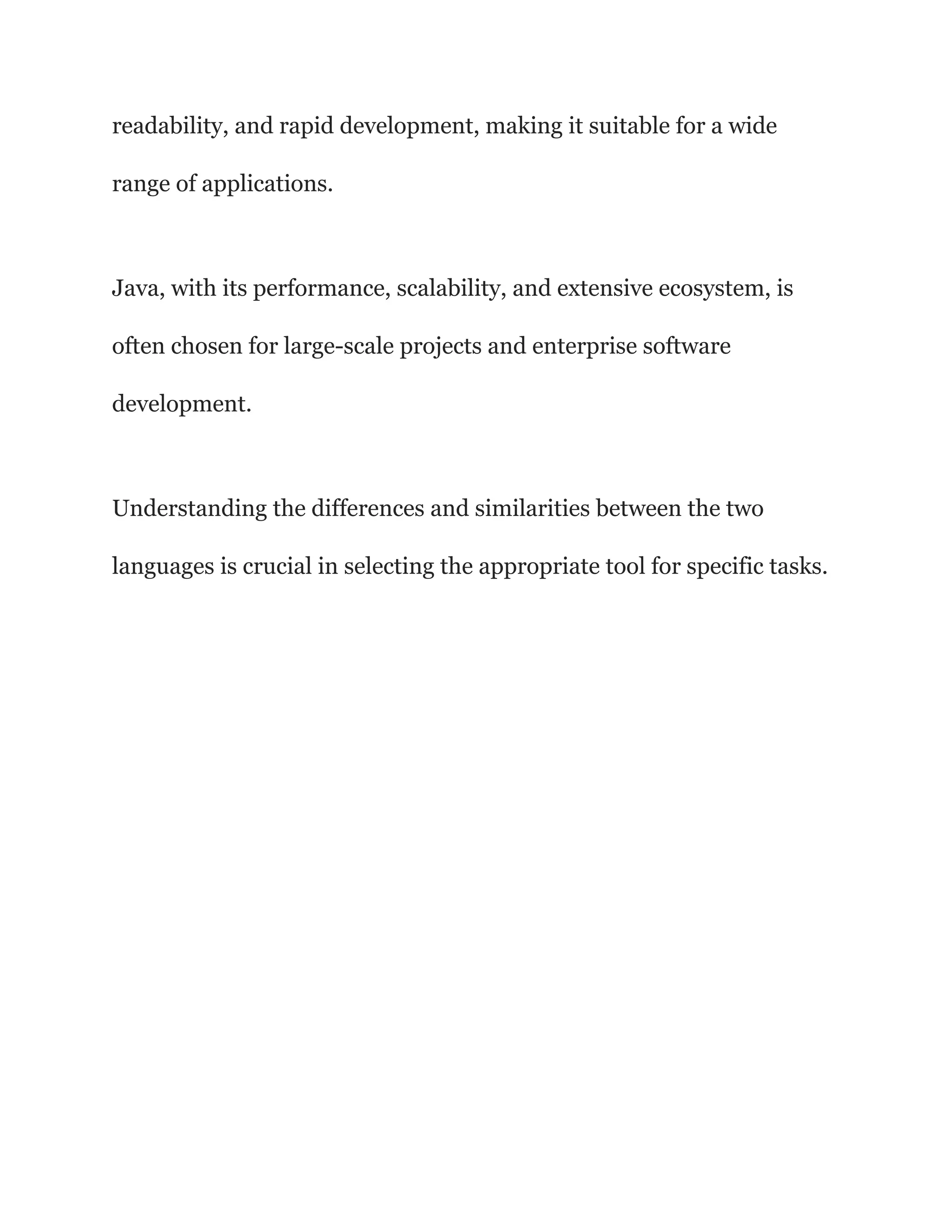Python and Java are two popular programming languages that are often compared. While both are versatile, they have key differences in syntax, design philosophy, performance, and common application domains. Python code is usually more concise and readable due to its minimalist syntax and dynamic typing. In contrast, Java code is more verbose but also more robust and suitable for large enterprise applications due to its focus on performance, scalability, and platform independence. Some examples demonstrating core features of each language produce the same outputs, showing their capability to solve the same problems despite syntactic variations.
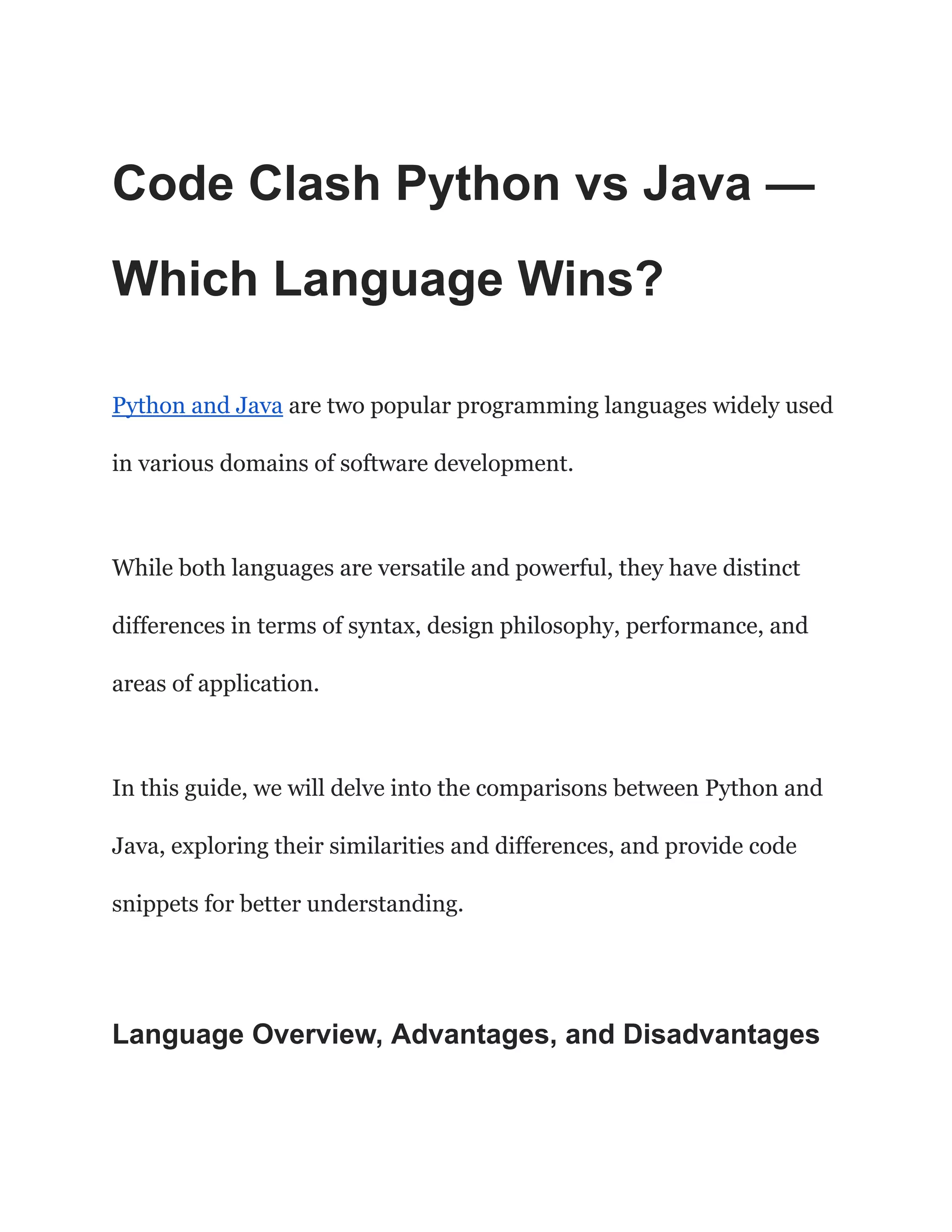
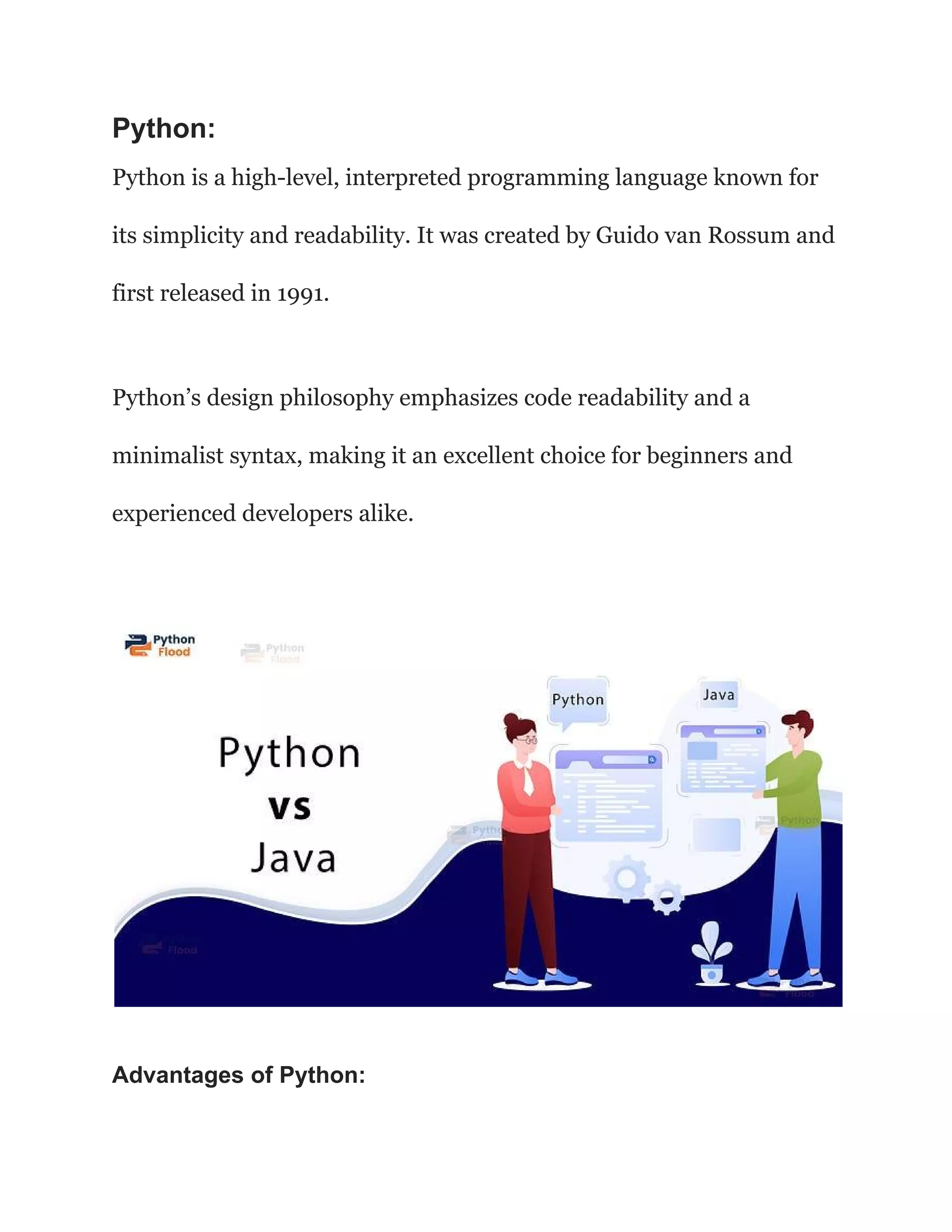
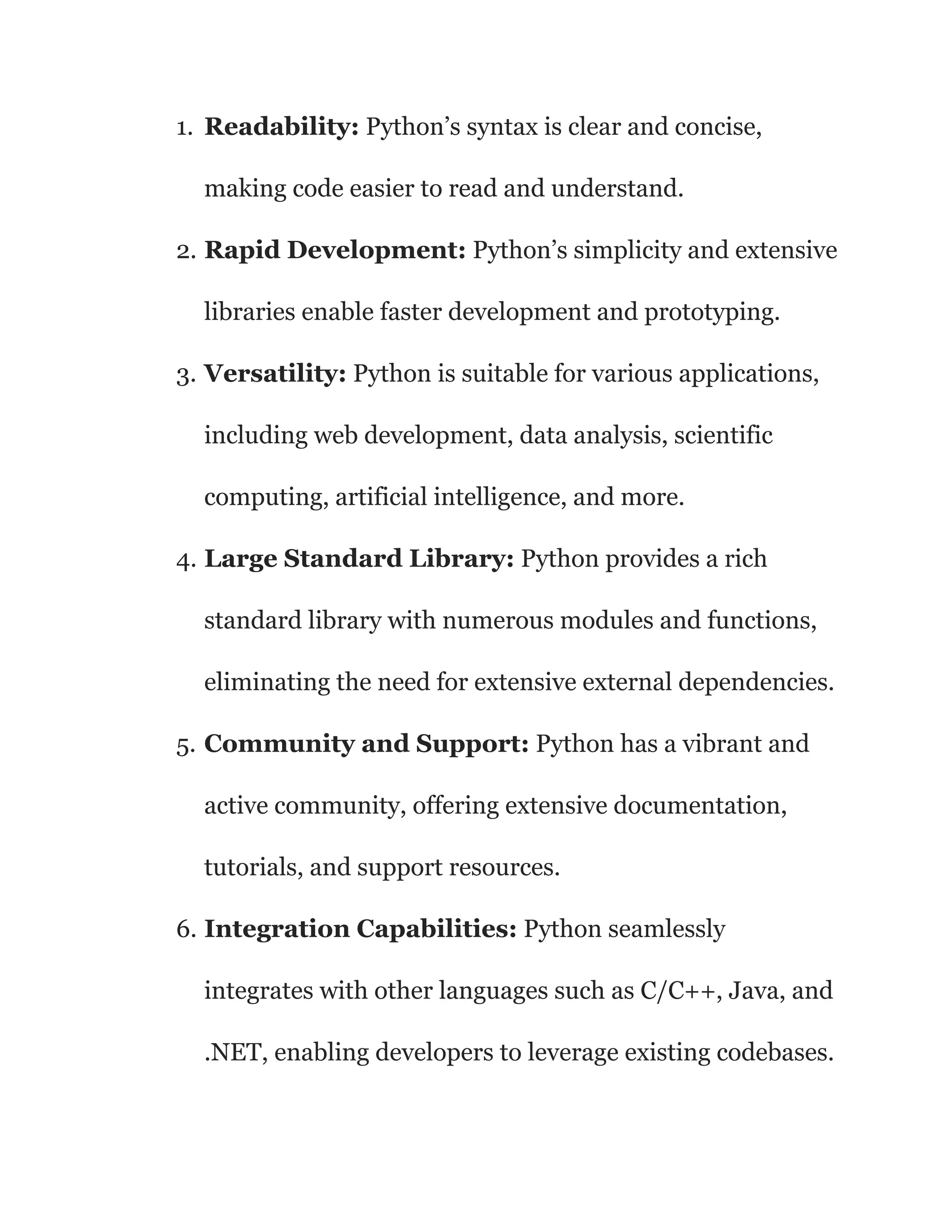
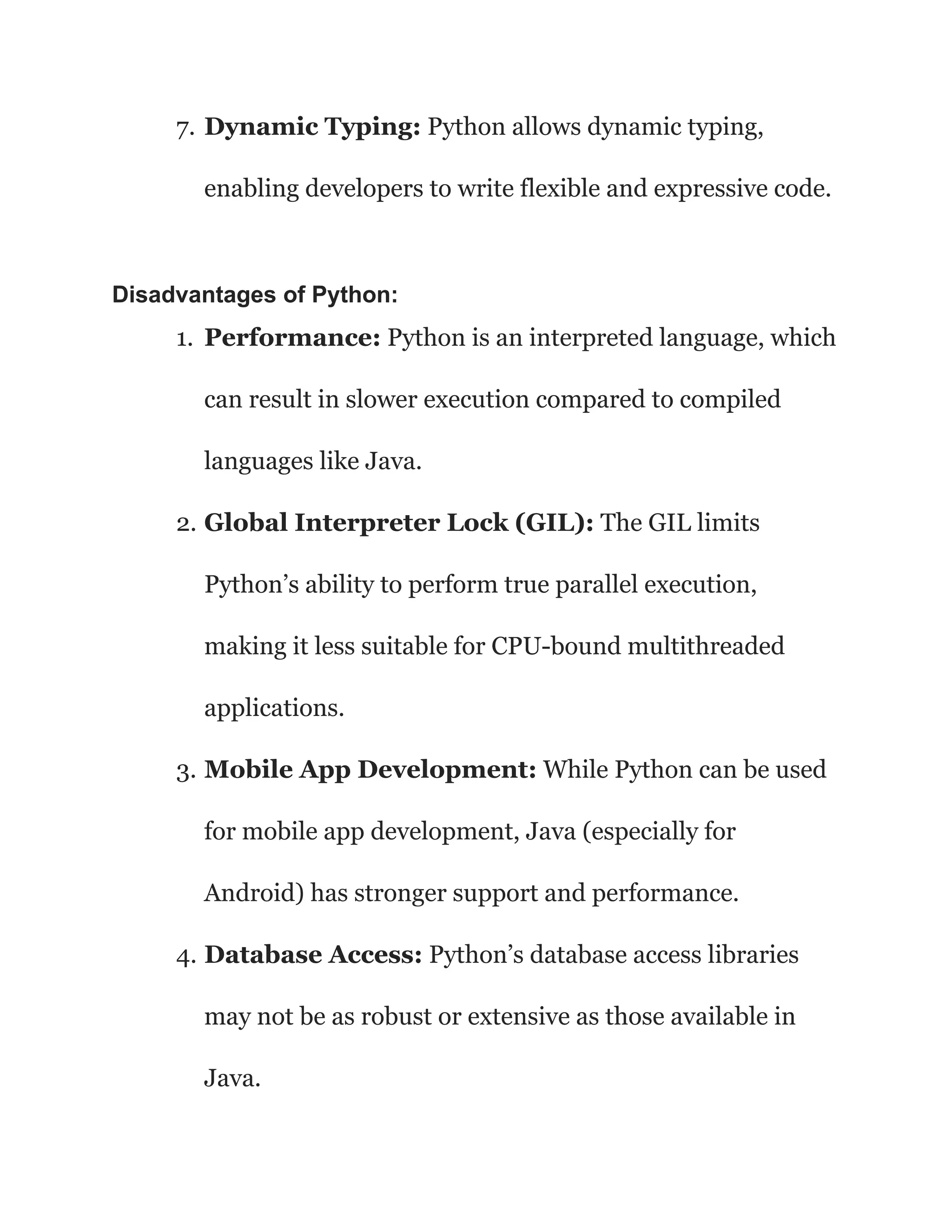
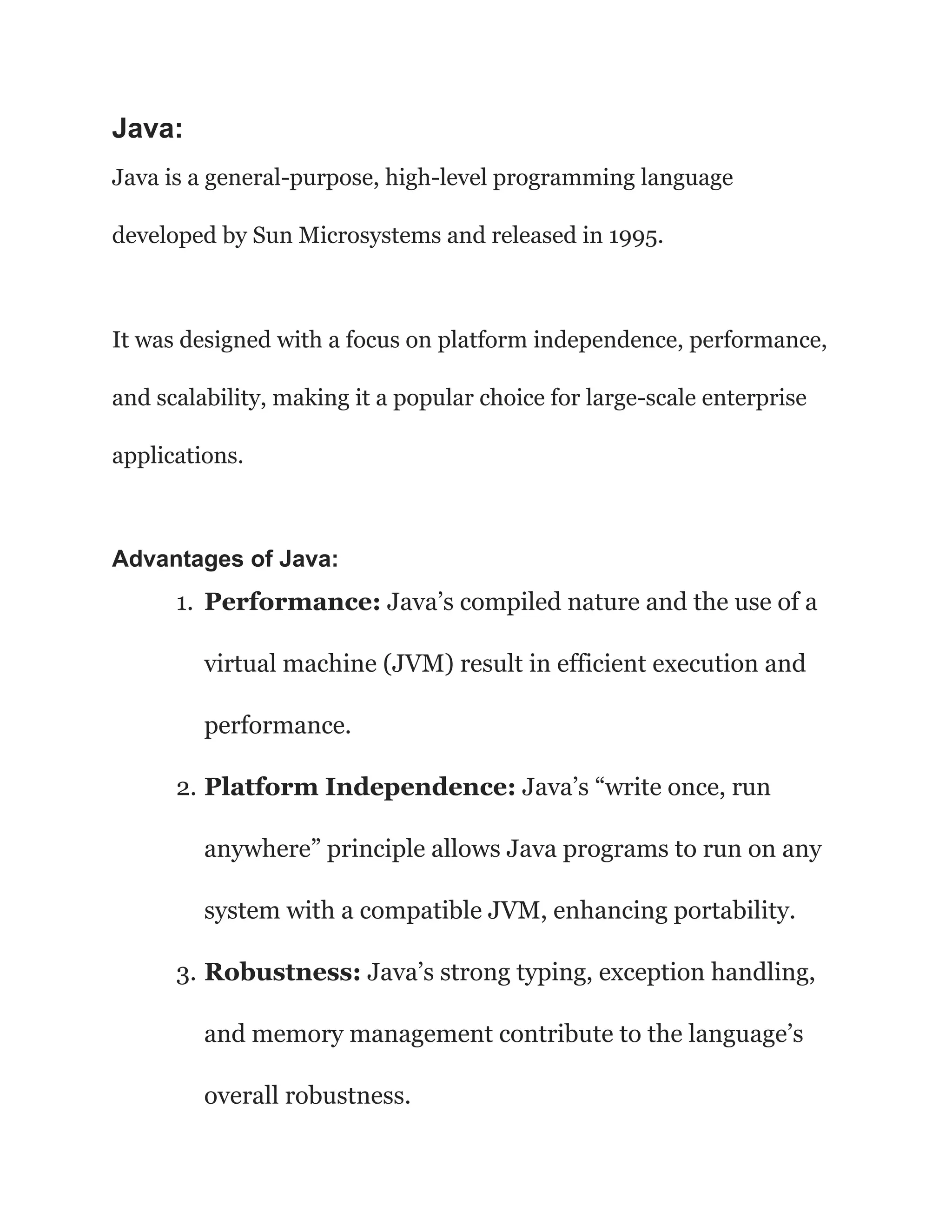
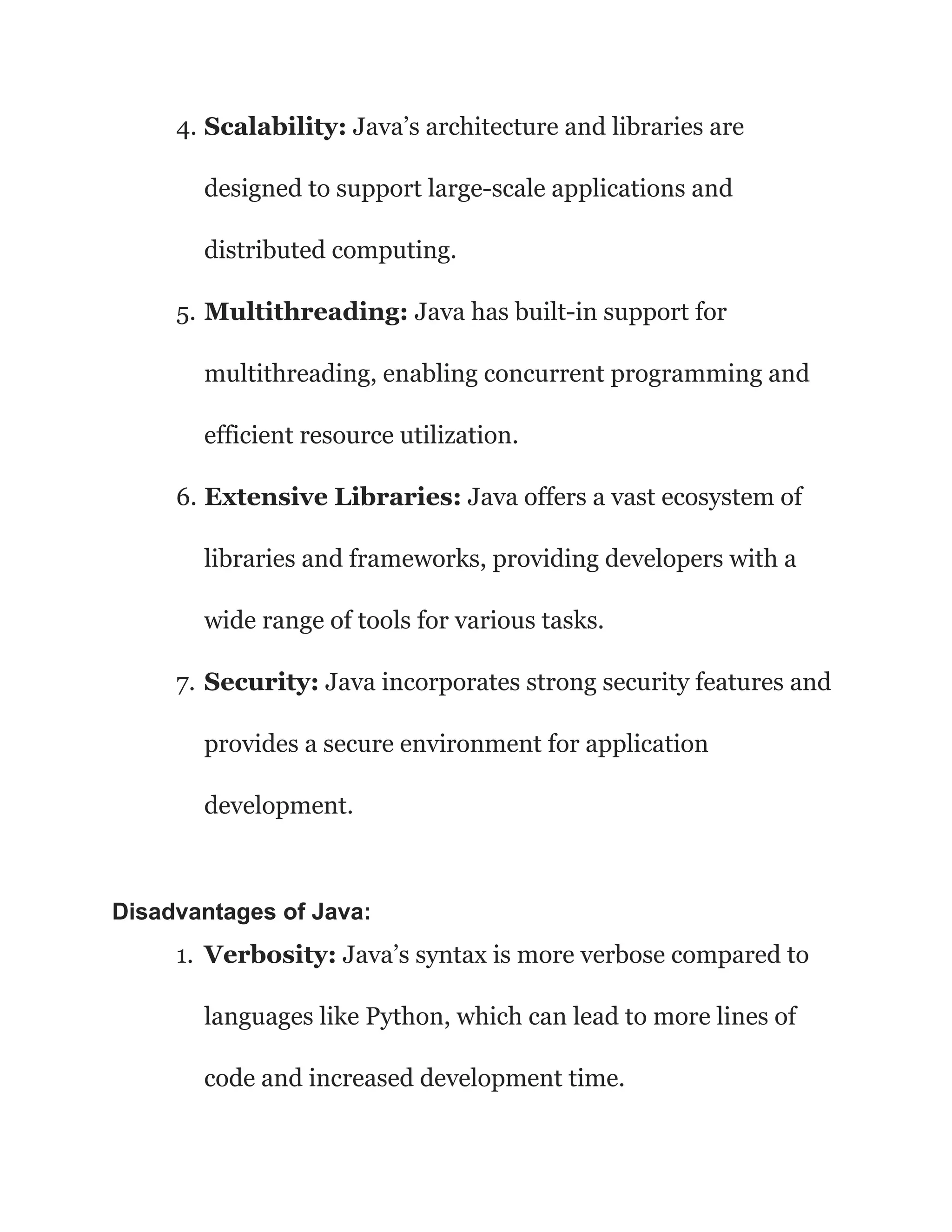
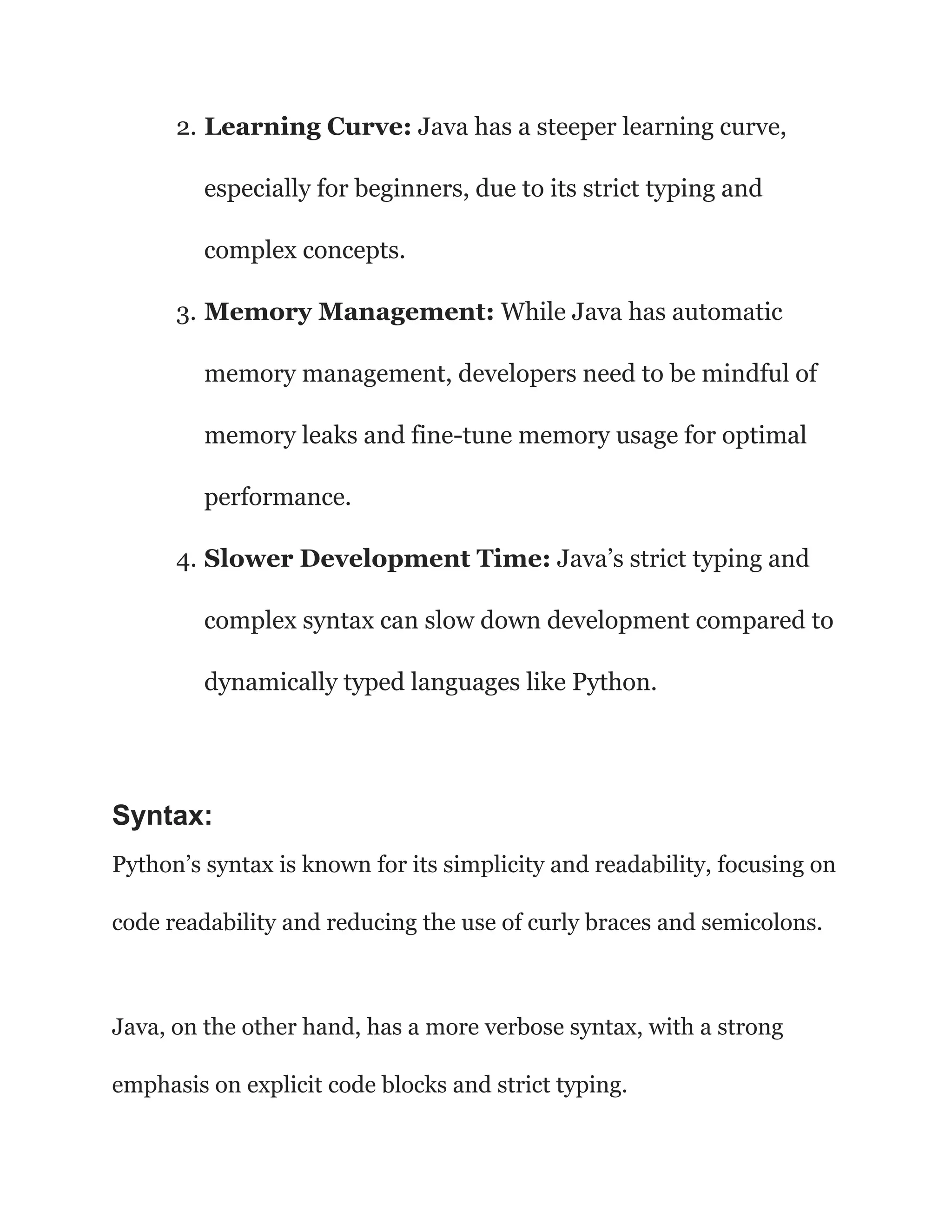
![Python Code Snippet: python # Python code snippet def hello_world(): print("Hello, World!") hello_world() Java Code Snippet: java // Java code snippet public class HelloWorld { public static void main(String[] args) {](https://image.slidesharecdn.com/codeclashpythonvsjavawhichlanguagewins-230816050951-6d8961d6/75/Code-Clash-Python-vs-Java-Which-Language-Wins-pdf-8-2048.jpg)
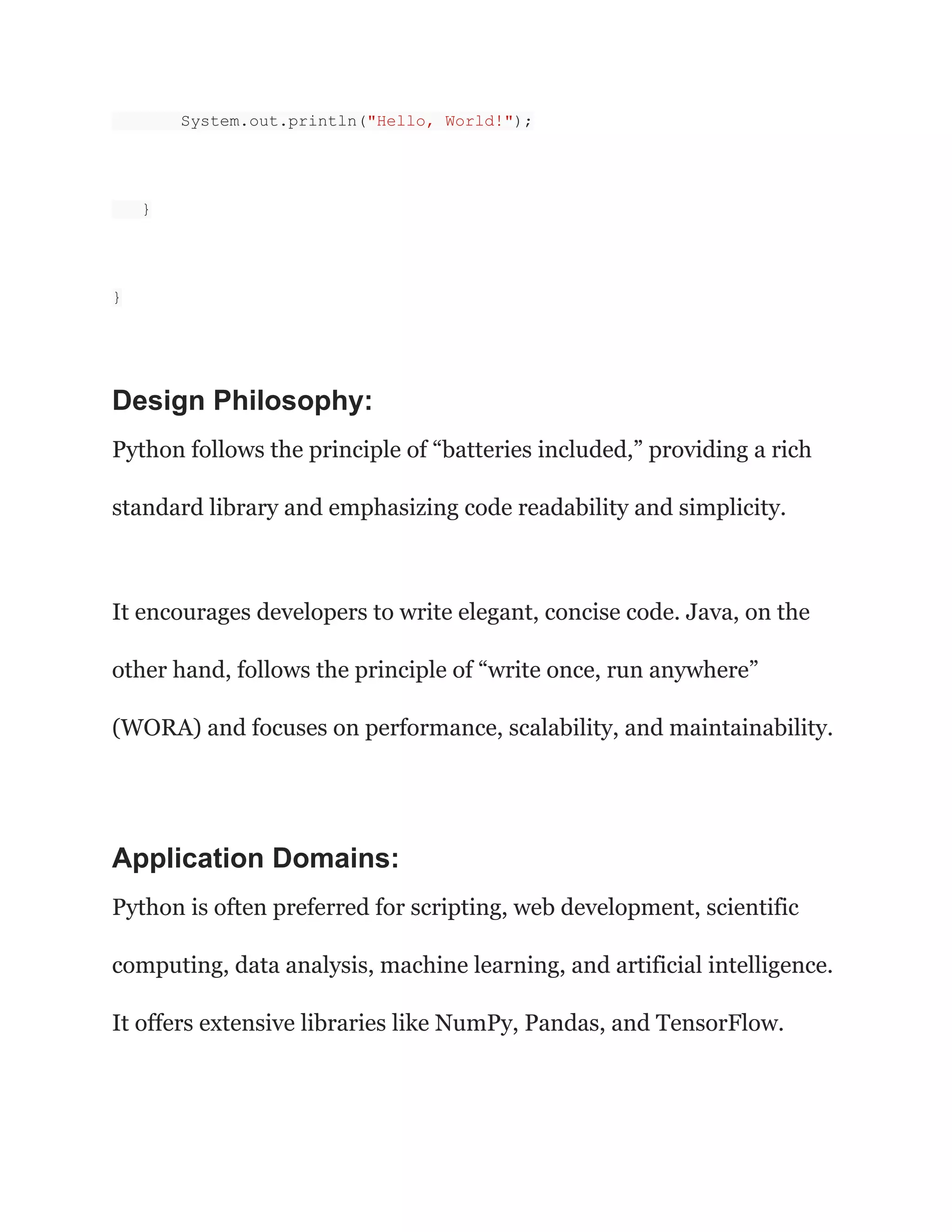
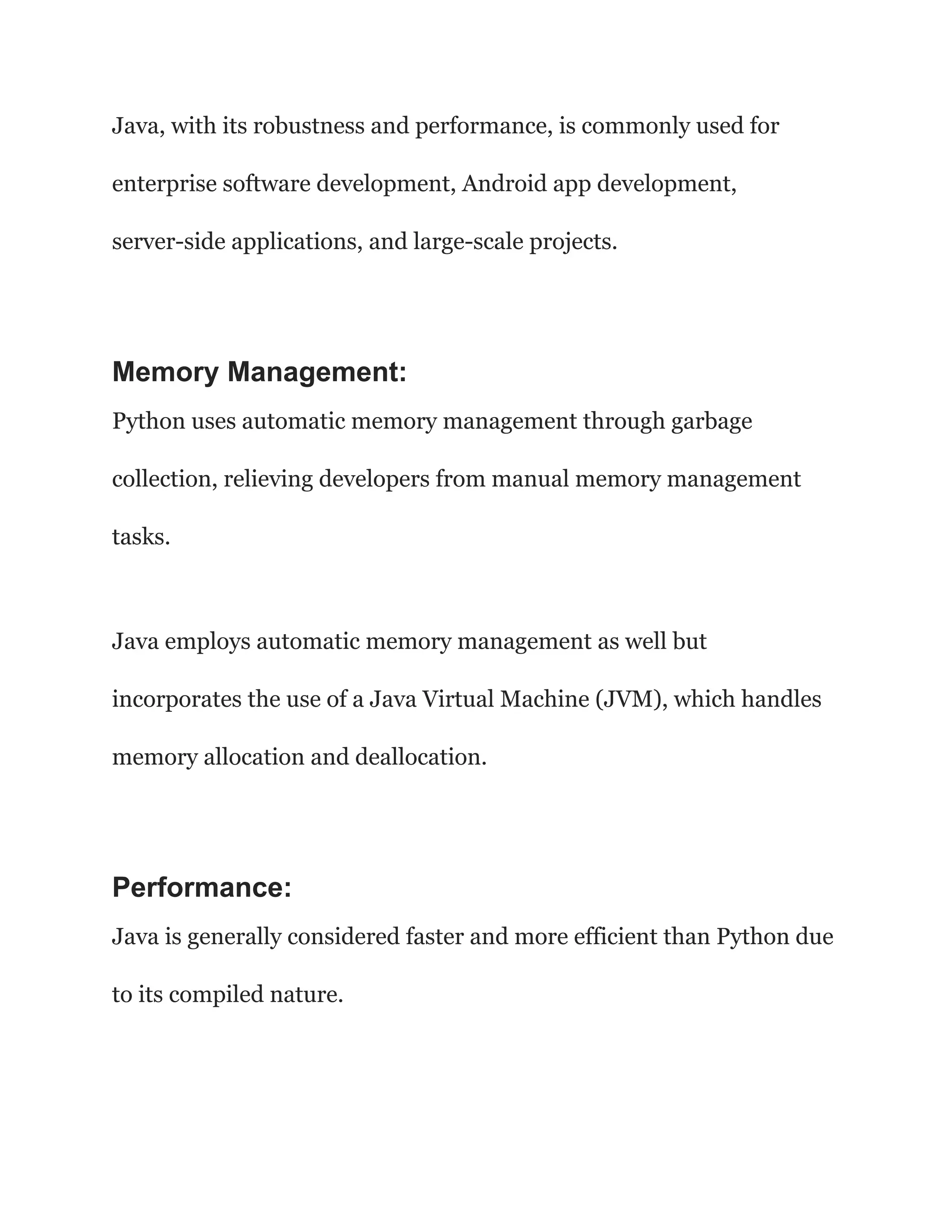
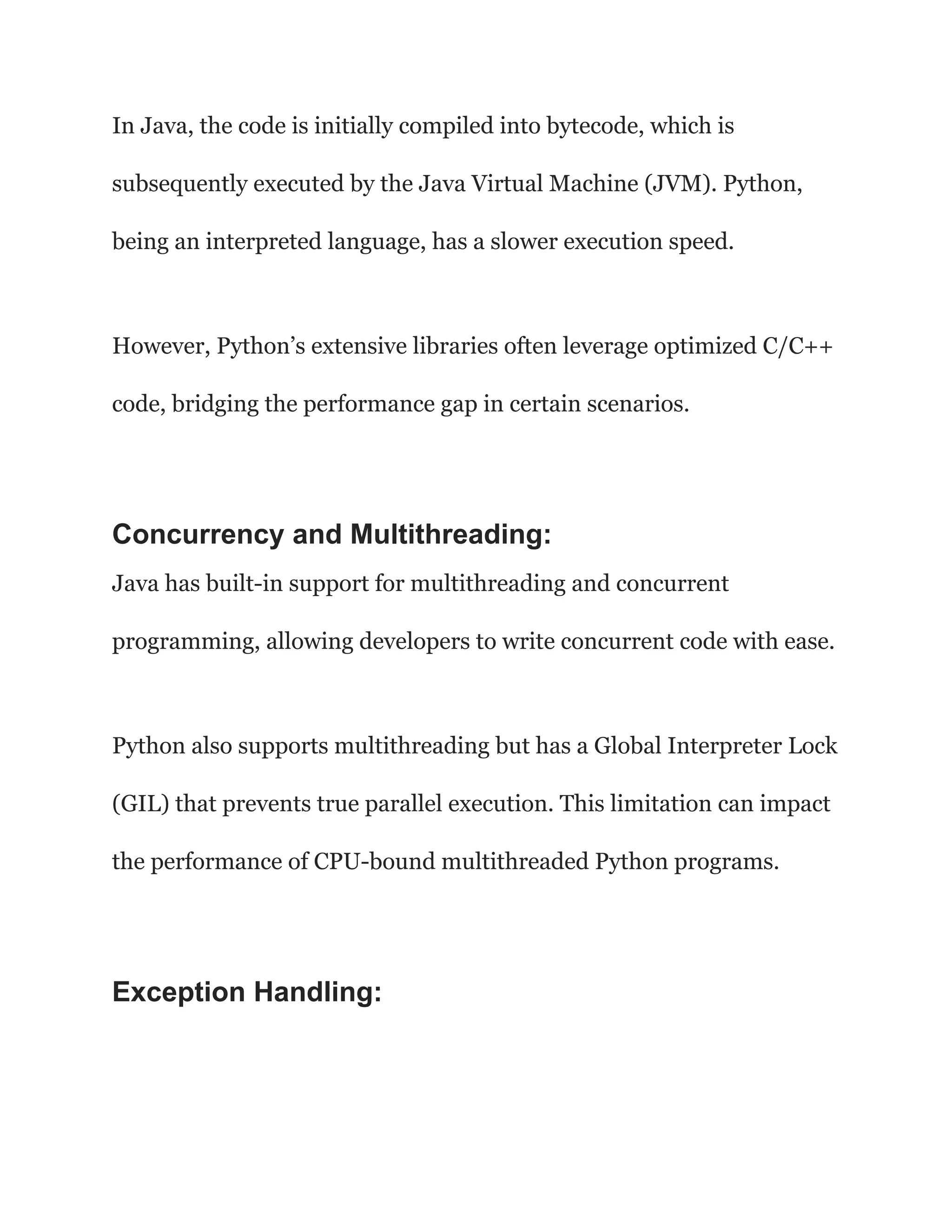
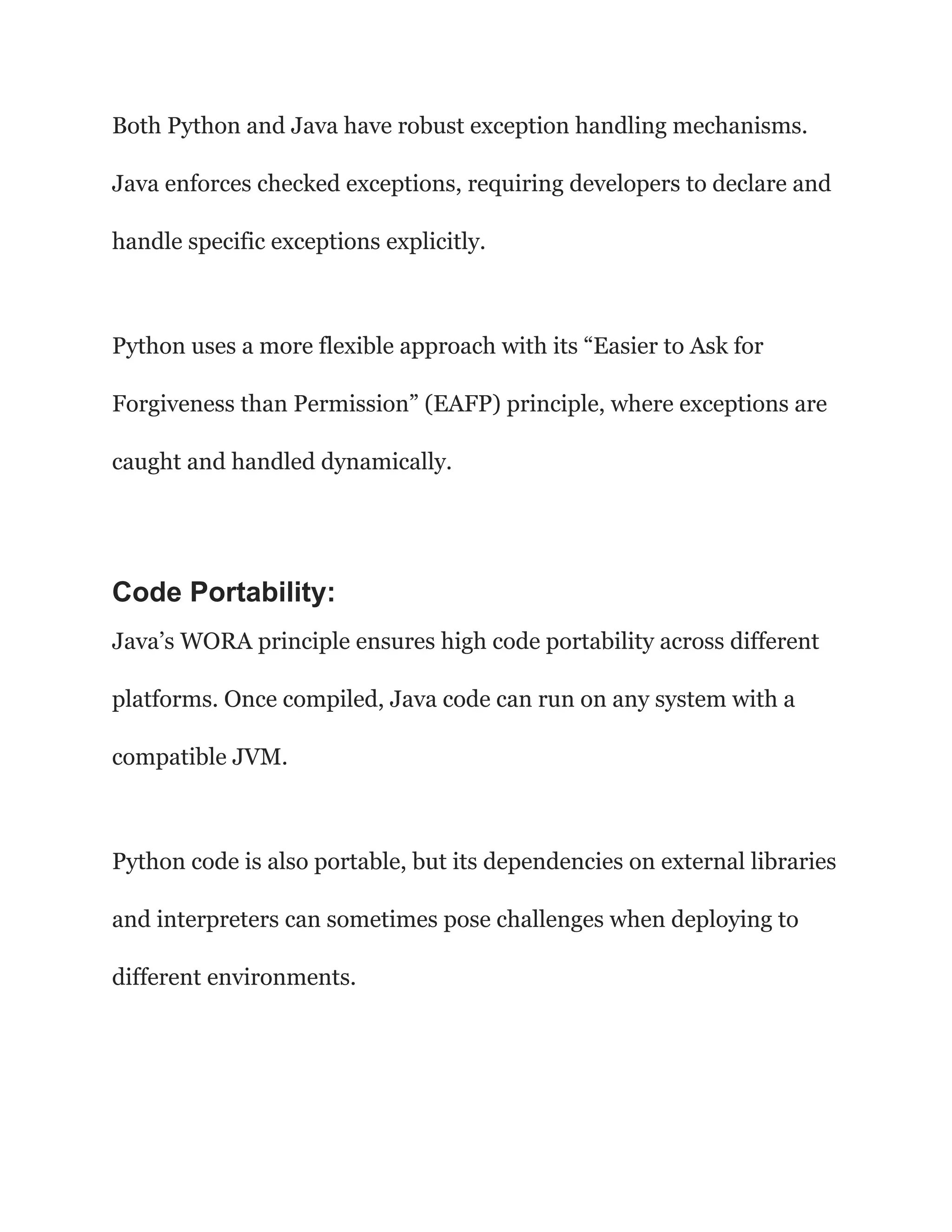
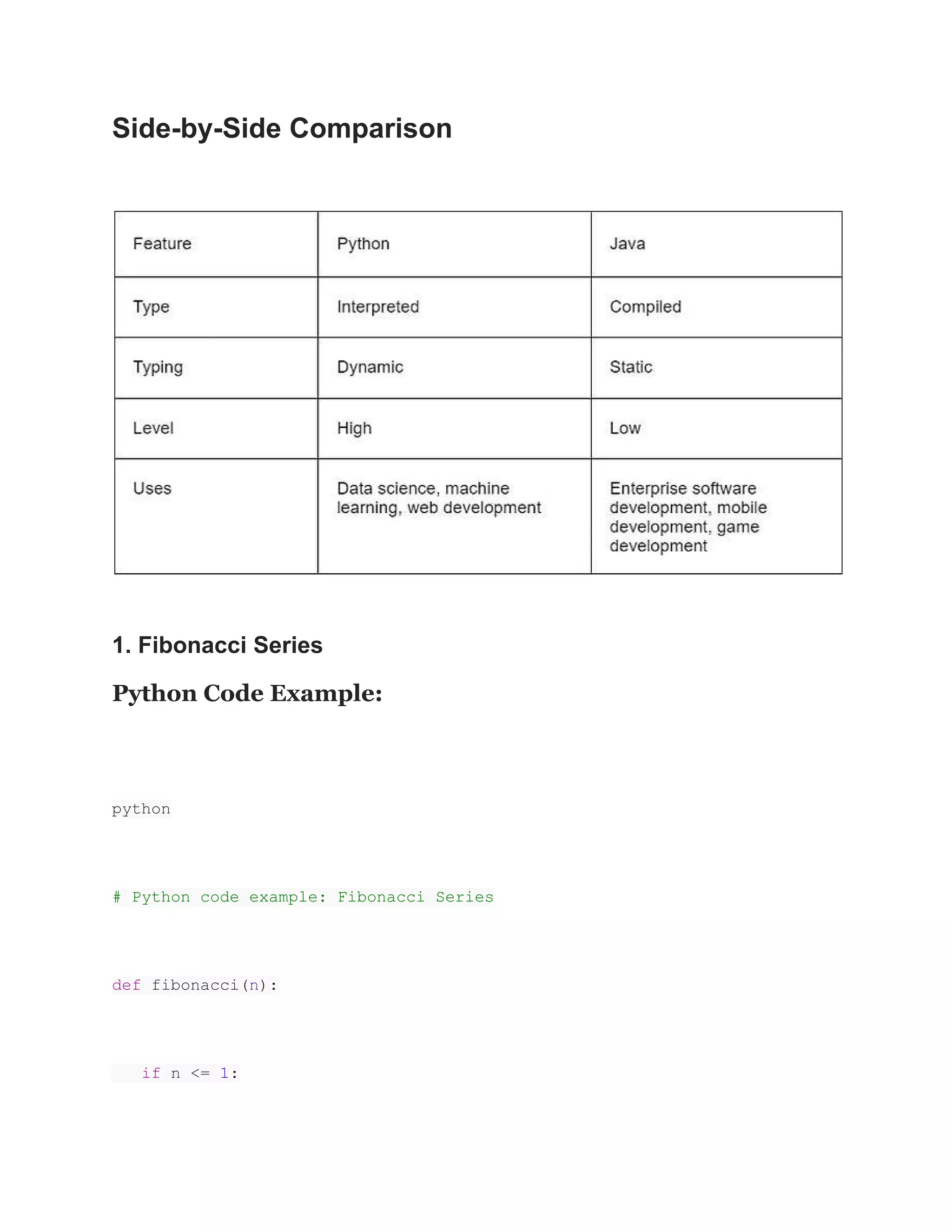
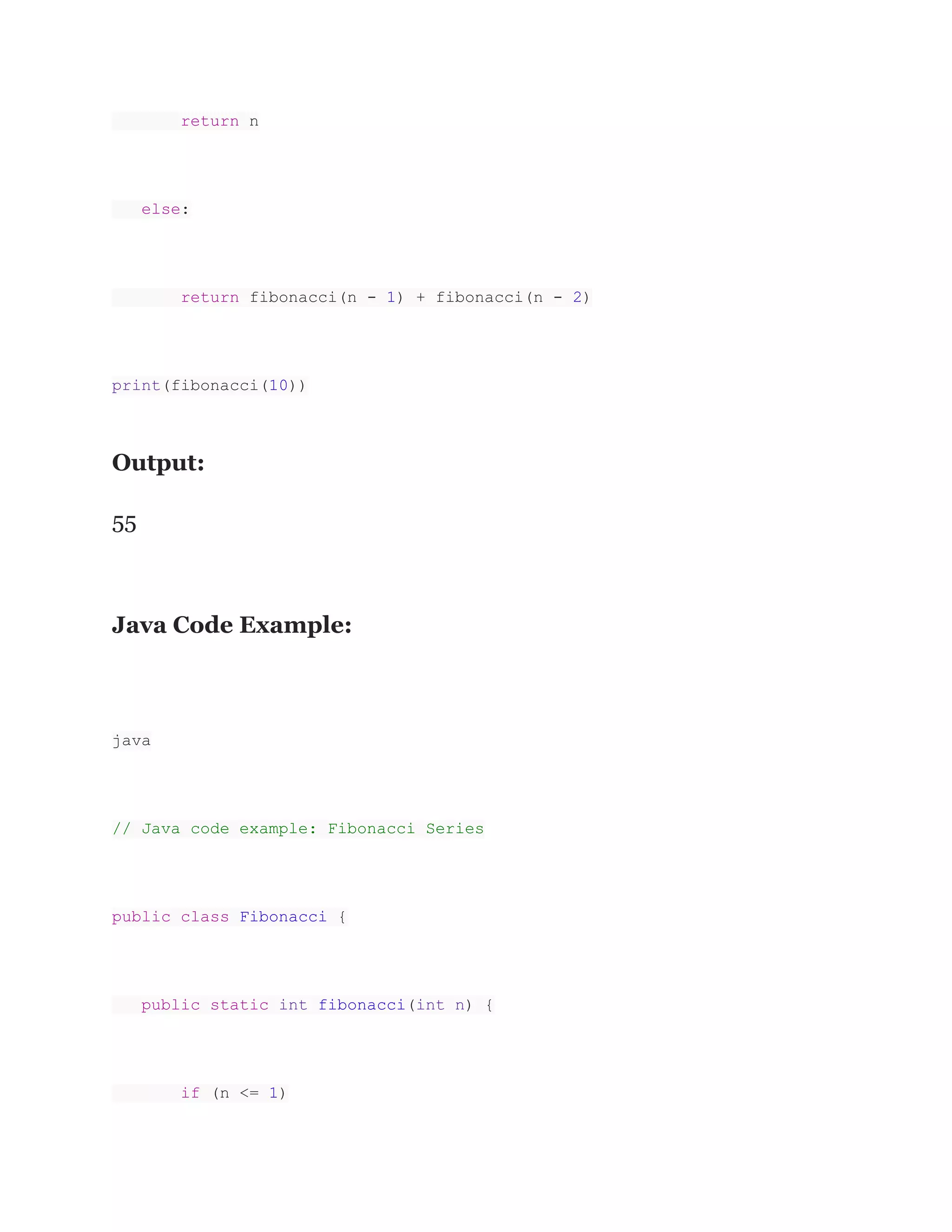
![return n; else return fibonacci(n - 1) + fibonacci(n - 2); } public static void main(String[] args) { System.out.println(fibonacci(10)); } } Output: 55 Both Python and Java code examples generate the Fibonacci series up to the 10th element, which is 55. The output is printed to the console in both cases.](https://image.slidesharecdn.com/codeclashpythonvsjavawhichlanguagewins-230816050951-6d8961d6/75/Code-Clash-Python-vs-Java-Which-Language-Wins-pdf-15-2048.jpg)
![2. calculate the square of numbers in a list Python Code Example: python # Python code example: List Comprehension numbers = [1, 2, 3, 4, 5] squared_numbers = [num ** 2 for num in numbers] print(squared_numbers) Output: [1, 4, 9, 16, 25] Java Code Example: java // Java code example: Enhanced For Loop](https://image.slidesharecdn.com/codeclashpythonvsjavawhichlanguagewins-230816050951-6d8961d6/75/Code-Clash-Python-vs-Java-Which-Language-Wins-pdf-16-2048.jpg)
![import java.util.ArrayList; import java.util.List; public class SquareNumbers { public static void main(String[] args) { List<Integer> numbers = new ArrayList<>(); numbers.add(1); numbers.add(2); numbers.add(3); numbers.add(4); numbers.add(5); List<Integer> squaredNumbers = new ArrayList<>(); for (int num : numbers) {](https://image.slidesharecdn.com/codeclashpythonvsjavawhichlanguagewins-230816050951-6d8961d6/75/Code-Clash-Python-vs-Java-Which-Language-Wins-pdf-17-2048.jpg)
![squaredNumbers.add(num * num); } System.out.println(squaredNumbers); } } Output: [1, 4, 9, 16, 25] In these examples, both Python and Java demonstrate different approaches to calculate the square of numbers in a list. Python uses list comprehension to create a new list with squared numbers. Java, on the other hand, uses an enhanced for loop to iterate over the list and populate a new list with squared numbers.](https://image.slidesharecdn.com/codeclashpythonvsjavawhichlanguagewins-230816050951-6d8961d6/75/Code-Clash-Python-vs-Java-Which-Language-Wins-pdf-18-2048.jpg)
![Please note that the outputs in both cases are the same: `[1, 4, 9, 16, 25]`. 3. Print function Python Code Example: python # Python code example: Hello, World! print("Hello, World!") Output: Hello, World! Java Code Example: java // Java code example: Hello, World!](https://image.slidesharecdn.com/codeclashpythonvsjavawhichlanguagewins-230816050951-6d8961d6/75/Code-Clash-Python-vs-Java-Which-Language-Wins-pdf-19-2048.jpg)
![public class HelloWorld { public static void main(String[] args) { System.out.println("Hello, World!"); } } Output: Hello, World! These examples showcase the traditional “Hello, World!” program in both Python and Java. The output in both cases is the same: `Hello, World!`. Conclusion Python and Java are both powerful languages, each with its own strengths and ideal use cases. Python emphasizes simplicity,](https://image.slidesharecdn.com/codeclashpythonvsjavawhichlanguagewins-230816050951-6d8961d6/75/Code-Clash-Python-vs-Java-Which-Language-Wins-pdf-20-2048.jpg)
